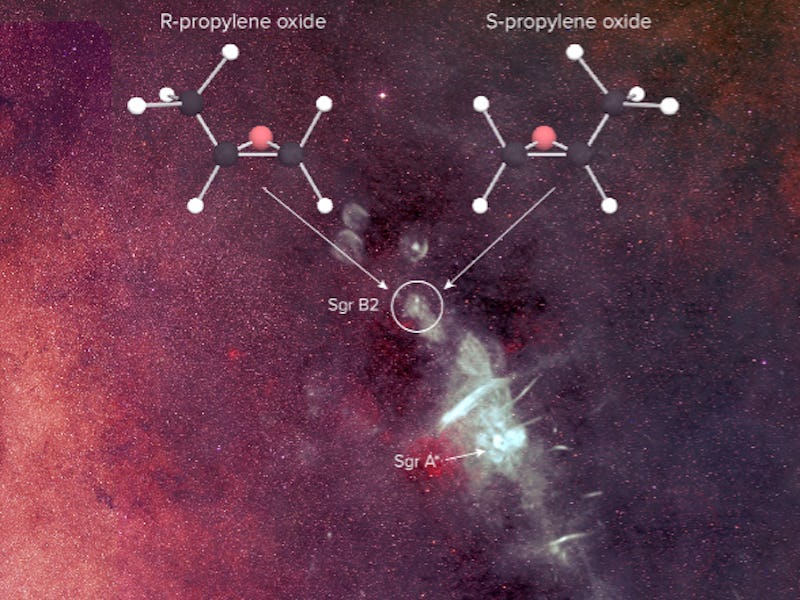Scientists Detect "Two-Handed" Chiral Molecules in Interstellar Space for the First Time
Studying the molecules could help us better understand our own biology.

Chiral molecules, compounds vital to the origins of life on Earth and which are often likened to a pair of human hands, have just been discovered outside our solar system for the first time. In a Science paper published today, researchers describe how they identified the molecules in a cloud in interstellar space.
We generally think of molecules as being “left” or “right-handed” — right-handed ribose sugars, for example (which build the famous double helix structure) or left-handed amino acids. We call this one-handedness homochirality. But chiral molecules are “two-handed,” and studying them might give us better insight into the origins of life on Earth and how it evolved.
Brett McGuire and Brandon Carroll, who share first authorship of the Science paper, tell Inverse that they began looking chiral molecules in interstellar space about four years ago, after an earlier prebiotic interstellar molecular survey showed promising signals of propylene oxide (CH3CHOCH2; the signature of a chiral molecule). Working from the National Science Foundation’s Green Bank Telescope (GBT) in West Virginia, they made confirming the existence of the molecules in space their primary objective.
The "left" (S) and "right" (R) versions of propylene oxide molecules.
“We’ve known about chiral molecules on Earth for a very long time,” McGuire said. “They’re an inherent part of our biology, of all life. Recently — this century — there’s been detection of chiral molecules in meteorites and a report of alanine the simplest chiral amino acid in a comet, but that’s as far out as had been detected before now.
One of the biology’s biggest mysteries is why life on Earth uses one-handed molecules. There are different theories about exactly when an excess of one side versus the other might have tipped the scales in either direction, but it’s been impossible to say for sure. But now, having detected chiral molecules at one of the very earliest stages of formation — in a giant cloud of gas just now forming stars, which doesn’t even have planets yet — scientists know for the first time where to look. They’ll be observing these molecules to try to learn just what processes generate an excess of of “left” or “right” molecules, and when.
“We know there’s a molecule there but we don’t know how much left or right propylene oxide there is in the cloud,” Carroll said. “So the next step is to go out and measure, is there more left or more right. And then searching for more chiral molecules in other places.”